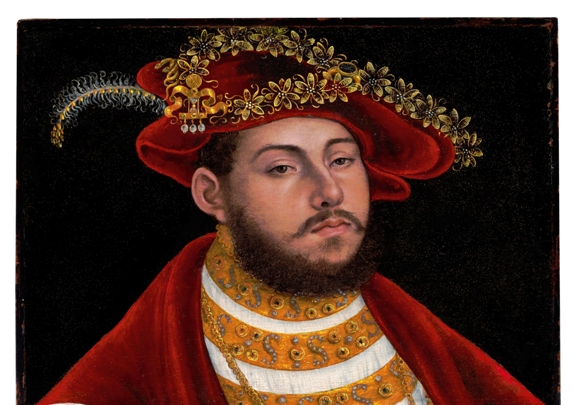After eight decades of searching, the heir of Holocaust victims was finally reunited with a family heirloom stolen by the Nazis.
By: AP and World Israel News Staff
A famed work of art which the Nazis stole from Jewish Holocaust victims was reunited with their heirs after an eight decade quest to locate it.
For nearly 80 years, the trail was stone cold for a missing 16th-century Renaissance portrait, looted by the Nazis from an estate in the Netherlands.
But late last year, Christie’s auction house was contacted about its potential whereabouts, and the prized painting was returned to the heir of its owners.
The painting, a portrait by the German artist Lucas Cranach the Elder, had belonged to Fritz Gutmann, who owned a large collection on his estate in the Netherlands. Gutmann and his wife were deported during the Holocaust to the Theresienstadt camp, and then were murdered in Auschwitz, and their collection looted by the Nazi high command.
After the war, Gutmann’s son and then grandson searched for the painting, one of the gems of the collection, for decades. The grandson, Simon Goodman (the family changed the spelling of the name), says the painting was listed on an inventory of works recommended for the personal use of Adolf Hitler. “That was the last mention I could trace,” Goodman told The Associated Press. “The trail had gone completely cold.”
But late last year, people in possession of the work, whose identity Christie’s is not making public, approached the auction house to see if it was indeed from the Gutmann collection. “They weren’t sure what they had,” Goodman says.
‘I’m touching something that my grandfather loved’
Goodman, who lives in Los Angeles, says the approach to the auction house was spurred by his book, The Orpheus Clock, in which he detailed his search for his family’s looted artwork. “Go figure, someone picks up my book at the local library, and look what comes back,” he said. “It’s all rather serendipitous.” He added that of all his family’s missing artwork, this painting was one of those he least expected to find — and most wanted to.
Goodman finally saw the painting — titled “Portrait of John Frederick I, Elector of Saxony” — a few weeks ago in New York, he says. “My wife took a picture of me hugging it like a long-lost family member,” he says. “It’s wonderful when you find something that has survived. I’m touching something that my grandfather loved.”
Goodman, 70, was born in London, a few years after his grandparents who originally came from Germany but moved to the Netherlands, were killed.
Through the artwork, he says, “I’m reconnecting with the family I never knew.” He says about a third of his family’s collection has been recovered so far, and he continues to search for many pieces — a fulltime pursuit.
The painting will be auctioned next month in New York. Christie’s has estimated the price at $1 million to $2 million.
The Nazis organized looting of European countries during the time of the Third Reich. Nazi plundering occurred from 1933 until the end of World War II, particularly by military units known as the Kunstschutz.
In addition to gold, silver and currency, cultural items of great significance were also stolen, including paintings, ceramics, books and religious treasures.
There is an international effort underway to identify Nazi loot that remains unaccounted for, with the aim of ultimately returning the items to the rightful owners, their families or their respective countries.
Many Jewish families have fought, or are fighting, to reclaim ownership over family heirlooms that are currently held by museums and other institutions around the world.


